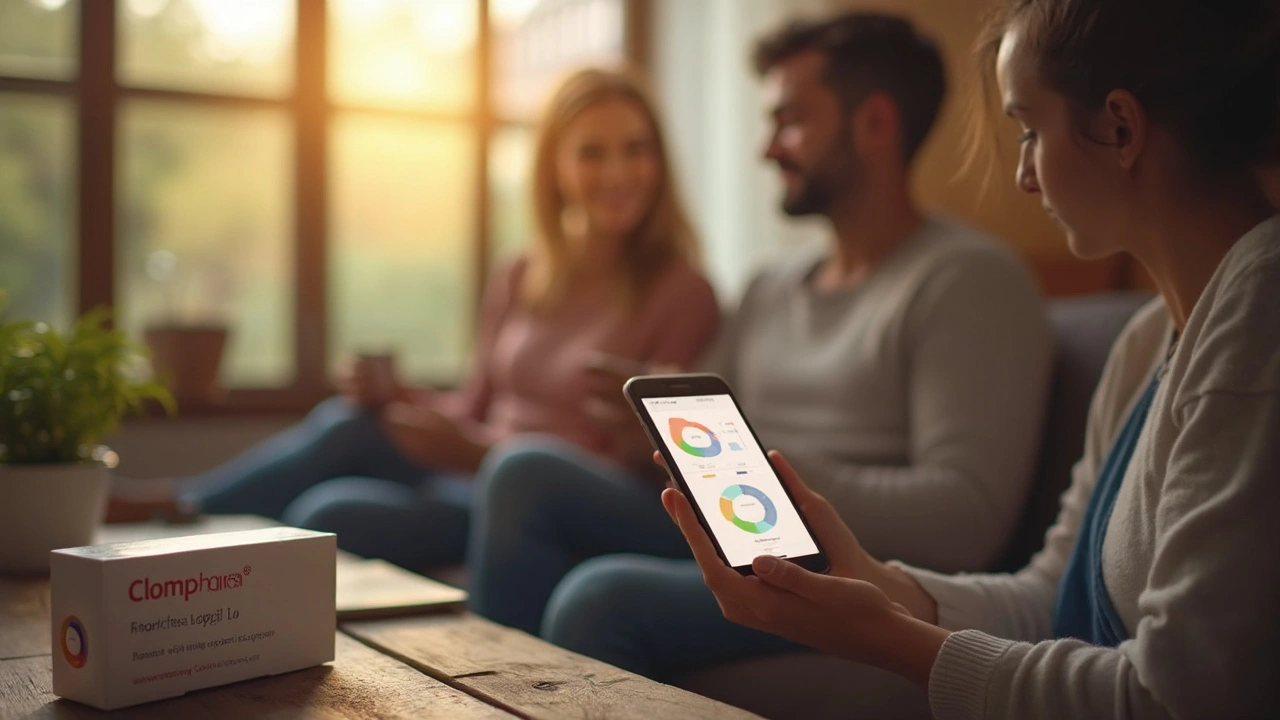Clomiphene and fertility apps are bridging the gap between traditional medicine and modern technology to enhance fertility treatment. This combo is reshaping the journey towards parenthood by providing personalized insights and tracking ovulation cycles. With Clomiphene known for its efficacy in stimulating ovaries, integrating fertility apps offers a hands-on approach to better understand the body's responses. These tools are empowering individuals with data-driven strategies to maximize their chances.
Fertility Apps: How to Choose a Smart Ovulation Tracker
Want to know your most fertile days without guesswork? Fertility apps can help, but they’re not magic. They range from simple period calendars to data-driven tools that use temperature, symptoms, and test results to predict ovulation. This guide helps you pick one that fits your goal—trying to conceive (TTC), tracking cycles, or spotting irregularities.
How fertility apps actually work
Most apps use one or more of these signals: cycle dates, basal body temperature (BBT), luteinizing hormone (LH) test results, cervical mucus notes, and symptoms like cramps or breast tenderness. Simple calendar apps predict fertile windows based on past cycle length. More advanced apps use the symptothermal method—combining BBT rise with mucus changes—or machine learning to improve predictions over time.
Remember: prediction is not the same as confirmation. A sustained BBT rise after ovulation confirms ovulation happened. LH tests give a short-term signal that ovulation may occur in the next 12–48 hours. Apps that let you log both temp and test results give the clearest picture.
Pick features that match your goal
If you’re TTC, look for apps that let you record BBT, LH test strips, intercourse, and symptoms. Charts that show temp shifts, coverline, and cycle overlays let you spot patterns and share clear charts with your clinic. If you want contraception-like protection, choose an app that explicitly states clinical testing and a method (for example, some apps marketed for contraception require strict daily tracking).
For cycle awareness, a lightweight app with period reminders and symptom tracking may be enough. If you have irregular cycles or conditions like PCOS, pick an app that handles variable cycles and supports manual adjustments. Apps that tie into wearables can capture overnight temperature or heart-rate trends without a separate thermometer.
Privacy matters. Check whether the app stores data locally or in the cloud, if it shares data with advertisers, and whether you can export or delete your data. Read the privacy policy and look for options to opt out of data sharing. If you plan to share data with a clinic, ensure the app exports readable charts or CSV files.
Practical tips: use a reliable basal thermometer if you track BBT, take temps at the same time daily, and log LH tests around your predicted fertile window. Don’t mix methods unless you understand how they interact—mixing casual calendar predictions with strict symptothermal rules can be misleading.
Apps are tools, not doctors. If cycles change suddenly, you miss cycles, or you’ve been trying for a year (or six months if over 35), talk with a healthcare provider. Use app charts to show trends—that saves time and makes conversations with your clinician more productive.
Try a few apps for a month or two. The one you stick with should fit your routine, protect your data, and give clear, usable insights. When used right, fertility apps can save time, reduce guessing, and help you become more aware of your body’s rhythms.

